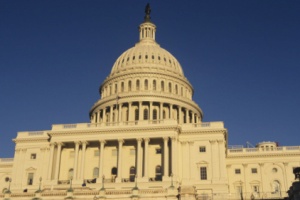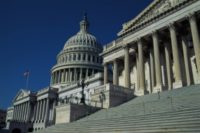 In a letter to the Senate last week, the heads of the nation’s top three occupational safety and health organizations made the case for adequately funding the nation’s top two occupational safety and health agencies.
In a letter to the Senate last week, the heads of the nation’s top three occupational safety and health organizations made the case for adequately funding the nation’s top two occupational safety and health agencies.
The following is the letter in its entirety:
March 26, 2015
The Honorable Roy Blunt
Chairman
Senate Labor, HHS, Education Appropriations Subcommittee
The Honorable Patty Murray
Ranking Member
Senate Labor, HHS, Education Appropriations Subcommittee
Dear Chairman Blunt and Ranking Member Murray:
As you work to craft the FY 16 Labor?HHS?Education appropriations bill, the National Safety Council, American Society of Safety Engineers, and American Industrial Hygiene Association urge you to ensure stable funding for the Occupational Safety and Health Administration (OSHA) at a minimum of the $592.1 million funding level included in the President’s budget and to ensure that the National Institute for Occupational Safety and Health (NIOSH), including its Education and Research Centers and Agriculture, Forestry and Fishing Sector Program, is funded at a minimum of its FY 15 omnibus funding level of $334.863 million.
Daily, more than 13,000 U.S. workers sustain injuries on the job that are serious enough to require medical consultation, 10 workers die from an unintentional injury suffered at work, and 145 workers die from work?related diseases. This burden costs industry and citizens an estimated $4.8 billion per week.
OSHA ensures safe conditions for America’s workers by setting and enforcing standards and providing training, outreach, education, and assistance to employers. OSHA regulations address issues such as the use of personal protective equipment, permissible exposure limits to hazardous materials, and industry?specific safety procedures. OSHA’s On?Site Consultation Program offers free and confidential advice to small and medium?sized businesses striving to improve their safety systems. The Voluntary Protection Programs and Alliance program offer ways for businesses and organizations to work cooperatively with the agency to reduce workplace fatalities and incidents.
The National Institute for Occupational Safety and Health (NIOSH) is the primary federal agency responsible for conducting research and making recommendations for the prevention of work?related illness and injury. NIOSH provides national leadership in the field by gathering information, conducting scientific research, and translating knowledge into products and services to support workplace safety.
NIOSH funding supports many important programs, including the Agriculture, Forestry and Fishing (AgFF) sector program and Education and Research Centers (ERCs). The agriculture, forestry, fishing, and hunting industry fatality rate is more than 8 times that of the all?industry average. Yearly, almost 18,000 workers in this sector are injured seriously enough to require time away from work. Daily, an average of almost 330 workers in this sector sustain injuries serious enough to require medical consultation, and over 1 worker dies from an injury suffered at work. Furthermore, due to its decentralized nature and diverse structure, the agriculture, forestry and fishing sector lags other industries in reducing the toll of work?related injuries and illnesses.
Directed by Congress, NIOSH established Centers for Agricultural Disease and Injury Research, Education and Prevention in 1990 in response to evidence that agricultural workers were suffering higher rates of injury and illness than other U.S. workers. Today, the initiative includes nine regional centers, and one national center to address children’s farm safety. These centers have conducted research leading to evidence?based standards that save lives. It is the only substantive federal effort to ensure safe working conditions for workers in one of our nation’s most vital production sectors.
NIOSH supports education and research in occupational health through academic degree programs and research opportunities. With an aging occupational safety and health workforce, ERCs are essential to training the next generation of professionals. The Centers establish academic, labor and industry research partnerships to achieve these goals. Currently, the ERCs are responsible for supplying many of the country’s OSH graduates who will go on to fill professional roles. With an aging occupational safety and health workforce, and a critical shortage of qualified OSH professionals, ERCs are essential to educating the next generation of professionals.
In order to ensure the health and safety of our nation’s workers, we respectfully request that you, at a minimum, fund OSHA at the funding level included in the President’s FY 16 budget and NIOSH at its FY 15 omnibus funding level. Thank you for your consideration of our request.
Sincerely,
Deborah A. P. Hersman
President & CEO
National Safety Council
Patricia M. Ennis, CSP, ARM
President
American Society of Safety Engineers
Daniel H. Anna, PhD, CIH, CSP
President?elect
American Industrial Hygiene Association



